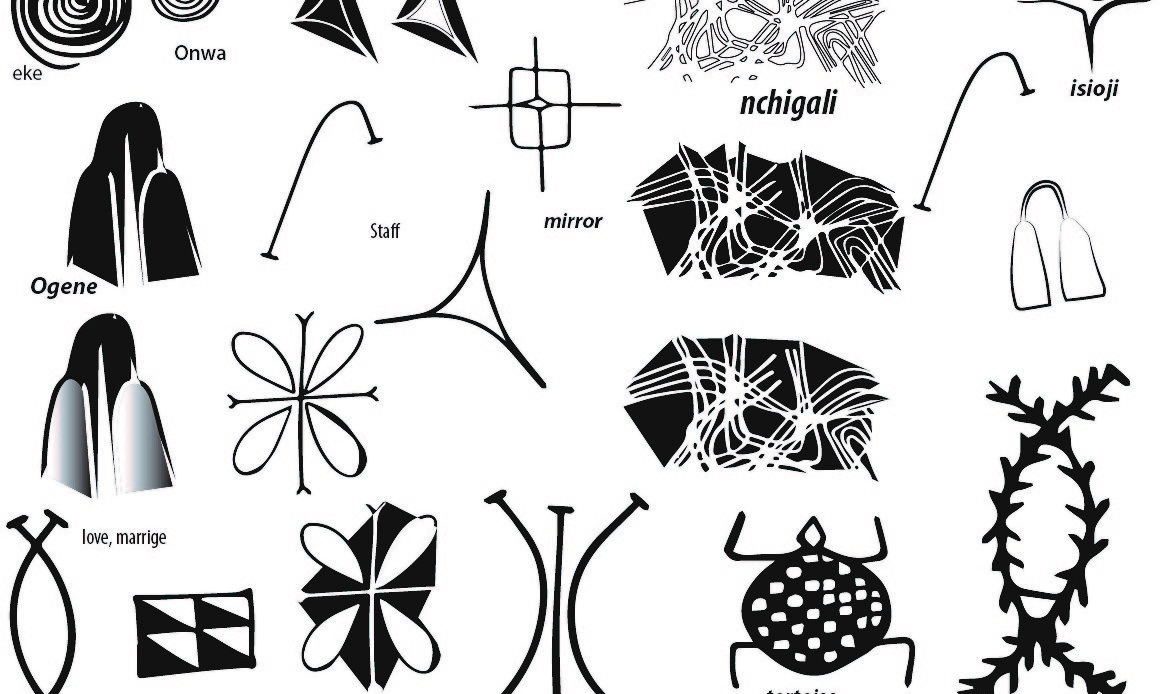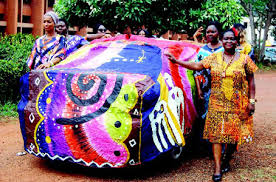Uli Art
Nigeria is known for its cultural diversity with over 200 ethnic groups. Each of these ethnic groups has distinct and amazing cultural practices. For the Igbo people of eastern Nigeria, their rich heritage includes the Uli body and wall painting beautification practised by Igbo women.

Uli (also known as Uri) are the curvilinear traditional designs drawn on the body by the Igbo people of South-eastern Nigeria. The practice has been in usage since the 9th century as the Uli designs were found on Igbo-Ukwu bronzes dated around the 9th century.

“Uli” derived its name from the Igbo names of the plants that are processed to produce the dye used for the designs. Pods gotten from these plants are ground on a stone or hard surface to reveal a fleshy pulp containing crushed seeds. This is then squeezed through a cotton wool cloth to extract a light yellowish liquid which is the dye. This was applied using a small knife, a sliver from the raffia palm or a feather.
Uli art is generally not sacred, apart from the images painted on the walls of shrines and created in combination with some community rituals. The focus of these designs is not on a larger meaning or message, but instead on the visual effect produced by the design as a whole. It is usually applied on special occasions such as religious ceremonies, marriages, childbirth, funerals, as well as for normal everyday wear.

Uli designs are derived from animal patterns (leopard spots, python markings), abstract forms (lines, circles, zigzags, etc), heavenly bodies (moon, stars), household tools/instruments (stools, basket, iron gong, etc), fruits and plants, etc. The leopard’s spots (Uliagwakaagu) and python markings (Uliagwugwaeke) are common motifs.
Read also: Nsibidi

Traditionally, the designs are either drawn on the body or painted onto the sides of buildings. When used as body art, Uli designs are meant to complement certain aspects of the body, often the legs or neck. They enhance the body’s beauty and give satisfaction and confidence to anyone decorated with it. Uli wall paintings are bolder and more vigorous. They are based on a palette of four colours: white, yellow, reddish-brown and black. A distinctive series of stippled white dots (Ntupo) were used to separate different designs or sections of the wall. Uli designs last for approximated eight days, both on the body and walls.

According to local mythology, the practice developed as a gift from Ala, the goddess of earth, who blessed women with the ability to create art, as such, the designs are almost exclusively produced by women. The Uli designers were highly respected in the Igbo society and the art was usually passed on from mother to daughter.


What was most fascinating to you about the Uli designs? We would love to hear your thoughts.
